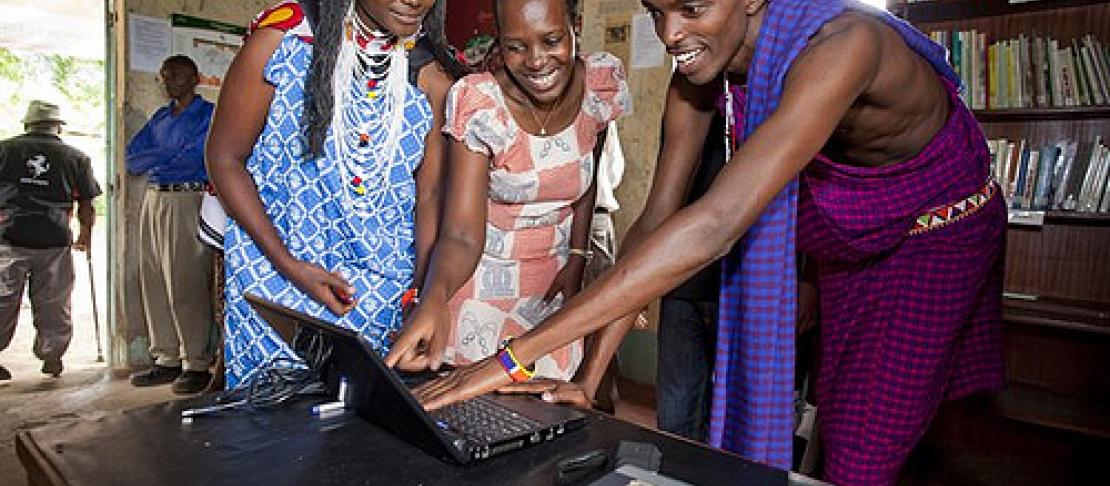How e-Agriculture could assist rural farmers adapt to climate change

Written by Cecilia Schubert
Information and communication technologies (ICTs) have the potential to support agricultural development in poor countries by functioning as innovative solutions to agricultural challenges. Realizing this, the Agriculture and Rural Development Department of the World Bank organized, together with the e-Agriculture Community and the United Nations Food and Agriculture Organization (FAO) an online forum in March, discussing the role of ICTs in supporting green growth and climate-smart agriculture.
The e-Agriculture forum was divided into two main topics. First topic discussed ICTs, such as Geographic Information System (GIS) and Remote Sensing (RS) techniques, as tools for land use planning and management. The second topic centered around the use of information tools to better adapt to climate change and manage risks such as early warning systems and using ICTs to communicate weather forecasts to farmers. The aim of the forum was to exchange ideas, information and resources in relation to the use of information and communications tools for sustainable agriculture and rural development.
CCAFS Director Dr. Bruce Campbell participated online as a subject matter expert on the theme climate-smart agriculture, a corner stone in our research activities and international engagements.
E-Agriculture – a growing phenomenon
E-Agriculture is according to the FAO an emerging field referring to agricultural services, technology dissemination and information delivered or enhanced through the internet or related technologies. The concept aims to improve communication and learning processes between the actors involved in agriculture. E-agriculture can for example be about delivering agricultural information and knowledge services such as market prices and extension services directly to farmers, via smartphones or other mobile devices. If you are interested in learning more about e-agriculture as a growing phenomenon then download “e-Agriculture – A Definition and Profile of its Application” (PDF) or visit the World Bank Group webpage ‘ICT in Agriculture’.
Following the online forum discussion
During the e-Agriculture forum an interesting debate unfolded on how mobile phones can be used to get climate-smart agriculture information to rural farmers. Climate-smart agriculture information could include text message notifications or voice services about new tolerant crops or sustainable farming techniques. However, “so much of the discussion around mobile phones and IT takes information out of the broader system whereby farmers make decisions” Dr. Bruce Campbell pointed out during the discussion.
Dr. Campbell instead believes that more focus should be placed on analyzing the demand for information and the factors that determine whether or not someone can act on the information they have received. "We simply don't know if [the information] has been useful if we don't look at it in this broader perspective". View the full discussion thread and related questions on the e-Agriculture Community Forum.
Ways to include communication technologies in agricultural and climate change research
During the forum Bruce Campbell pointed to the CCAFS climate analogues tool, which helps identify how a current area might look like in the future by matching it with an area that currently exhibits the same growing conditions. The analogues sites is an internet-based application coupled with geographic information systems (GIS). Farmers thus get to learn online on how to adapt to the changing climate by matching their area with a comparable site. To learn more about this research project read our report “Climate Analogues: Finding Tomorrow’s Agriculture Today” (PDF).
Another example brought forward by Dr. Campbell of how communications technologies could support agricultural development, is the weather advisory service in Mali. The Mali Meteorological Program has been providing climate forecasts to farmers in the region since 1982, with increased yields and willingness to invest in new technologies as a result. CCAFS is currently learning about this successful project and the potential of scaling it up in other regions in the Sahel. Read more about this project on our blog “New project looks to bring weather information to farmers in the Sahel”
This story was written by Cecilia Schubert, Communications Assistant, at the CGIAR Research Program on Climate Change, Agriculture and Food Security (CCAFS)